SoulCalibur Legends
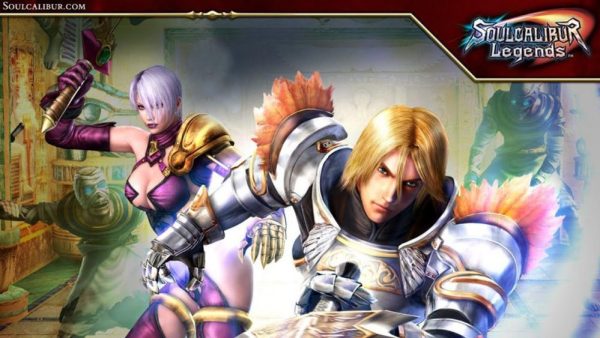
SoulCalibur Legends split off from the fighting roots of the series, opting for an action-adventure experience instead. Sadly, that wasn’t really a good change.
The game primarily focuses on Siegfried and Ivy, telling the story of Siegfried’s transformation into Nightmare.
Sadly, it’s gameplay was simply too repetitive and uninspired, while also suffering from a number of issues, like a janky camera.
There are seven playable characters in total, including the guest character of Lloyd Irving from Tales of Symphonia.
While an action-adventure SoulCalibur game could work, Legends just didn’t live up to the series’ legacy.
Legends is currently the franchise’s lowest reviewed and worst-selling game.
SoulCalibur: Broken Destiny
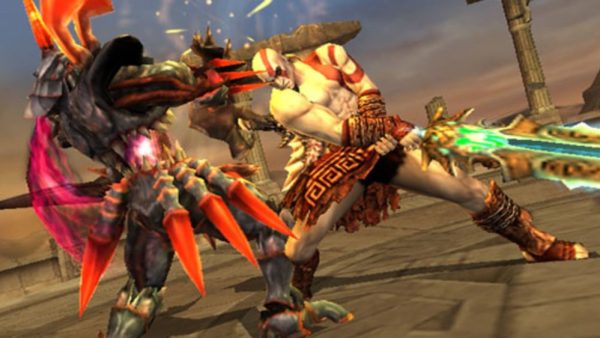
Kicking off our list of the best Soulcalibur games is Broken Destiny.
Broken Destiny hoped to bring the full SoulCalibur experience to a handheld platform, and while it may not have reached that lofty goal exactly, it’s a pretty good entry by most measures.
While Broken Destiny doesn’t change anything about the core gameplay, it introduces two new characters to the series.
Kratos from God of War was the guest character for this entry, while a brand new character named Dampierre was introduced as well.
The game featured a few different modes and options including Quick Match, Character Creator, Trials, and more.
A mode called The Gauntlet functioned as Broken Destiny’s story, however, it’s non-canon and has a much larger emphasis on comedy than most SoulCalibur games.
Common complains with Broken Destiny focused on the lack of online modes and a lackluster story, but it’s still a decent handheld fighting game.
Soul Edge
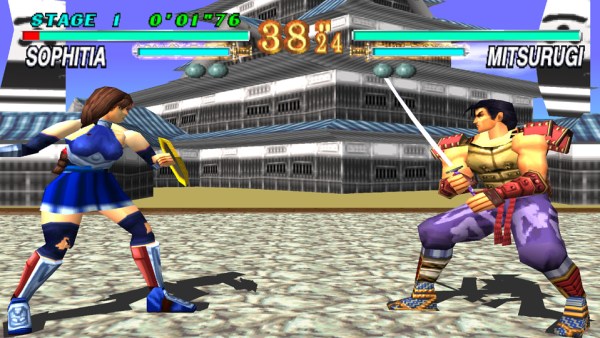
The game that started it all, while not called SoulCalibur, Soul Edge is the very first entry in the weapon-based fighting series. Following Battle Arena Toshinden, Soul Edge was the second entirely weapons-based 3D fighter in history.
The game helped establish many of the elements the series would become known for. Movesets stuck fairly close to what you’d see out of Namco’s other big fighting game at the time, Tekken.
At the time, Soul Edge featured a more detailed story than your typical fighting game, actually giving context on each character’s motivations in the narrative.
We were also introduced to many of the series’ most iconic characters, although they looked quite a bit different at this time.
The roster consisted of Mitsurugi, Siegfried, Taki, Sophitia, Rock, Voldo, Seong Mi-na, and Li Long (who would only appear later as a bonus character in III).
It may not have aged all that well, but Soul Edge remains the basis for what would come later.
SoulCalibur V
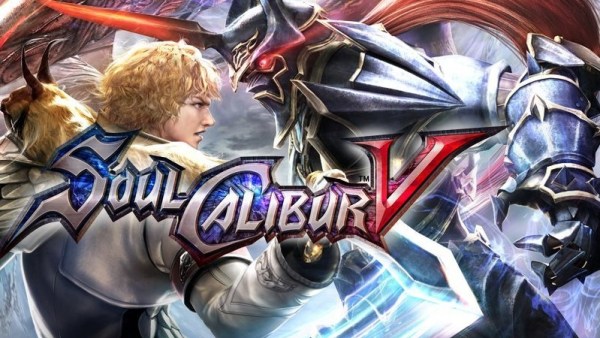
SoulCalibur V made big changes to the story and roster of the series, and not all of these were received well by fans. The game is set in the future of the series’ timeline 17 years after IV, and focuses on the children of Sophitia.
A few of the iconic characters from past games were removed including Talim, Zasalamel, Taki, Seong Mi-na, and Yun Seong. In their place, a host of new characters and successors were introduced, but unfortunately very few of them felt well-developed.
SCV once again includes a guest character, Ezio Auditore from the Assassin’s Creed franchise.
Gameplay-wise SCV remained pretty much the same as SCIV, although it does introduce a tweaked Critical Edge system that lets player fill up a gauge and unleash devastating attacks.
Like most SoulCalibur games there’s a wealth of things to do including a host of different multiplayer modes, arcade mode, quick matches, and character creation.
Sadly, the part of SoulCalibur V that really sticks out as lackluster is its story, which ends up just feeling half-baked in the end.
SoulCalibur IV
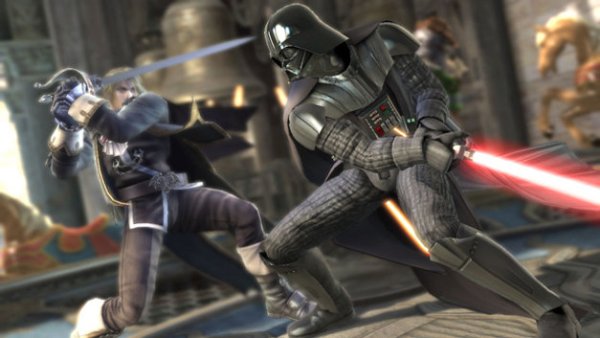
You can’t talk about SoulCalibur IV without mentioning how crazy its guest characters are, adding in the likes of Yoda, Darth Vader, and Starkiller from Star Wars. Tonally it might be a bit strange, but the guest characters were an absolute blast to play, outside of some balancing issues.
Being the first game in the series on Xbox 360 and PS3, the game received a huge graphical overhaul from SoulCalibur III, and to this day it’s still a good looking game.
For the very first time in the series, SCIV featured online multiplayer, easily letting you take the fight against other players. It also introduced a new Critical Finish system letting you unleash massive attacks against an enemy if you deplete their Soul Gauge.
In the Story and Tower of Lost Souls modes, the game also used something called Active Matching Battle, allowing you to swap between multiple characters in one battle.
SoulCalibur IV was stuffed to the brim with content, and it was the first entry in the series that really made strides into becoming more accessible.
SoulCalibur III
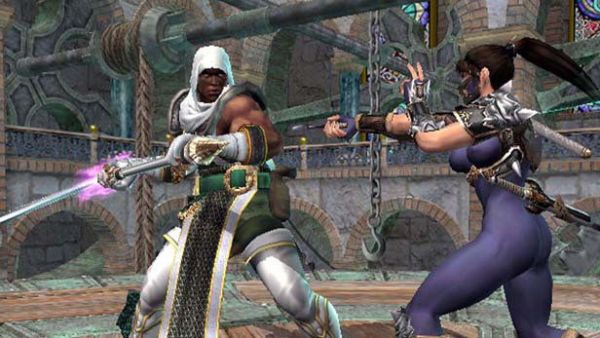
SoulCalibur III introduced quite a few new ideas and characters that the series would continue to use for years to come.
It was the first game to feature the wildly popular character creation, giving players a robust selection of customization options and weapons to choose from.
It was also the first game to feature fan-favorite characters Tira and Zasalamel.
SCIII had a detailed story mode called Tales of Souls, which was an interactive mode that played out like a storybook.
Another mode called Chronicles of the Sword had you taking your custom character through a storyline that featured strategy-RPG gameplay, with battles being resolved by a fighting match.
Strangely, SCIII is the only game in the series to not feature a proper guest character.Dante from Devil May Cry was originally planned as a guest, but was dropped for reasons that were never explained.
Still, SoulCalibur III features a massive roster of 24 characters playable in the story, and 18 others playable in other modes. Even without online play, this entry could keep you busy for tens of hours, especially if you grabbed a few friends to play with.
SoulCalibur
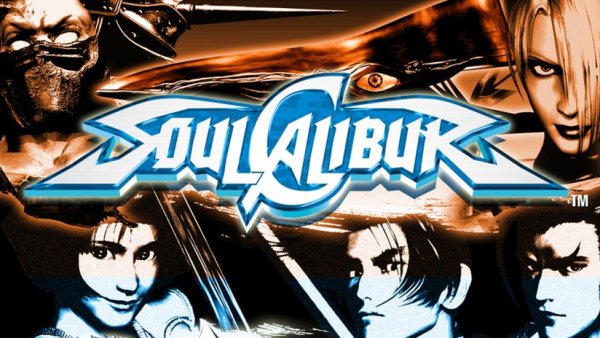
While Soul Edge may have been the game that created the series, SoulCalibur was the one that really defined what it would be. It’s also a game that was far ahead of its time.
The biggest innovation this entry brought to the table was the 8-way-run a system that gave players the freedom to move their character around the battlefield however they wanted, in any direction they wanted.
Previous 3D fighters had only allowed limited movement outside of the main axis, and SoulCalibur felt like a revelation in comparison.
The Guard Impact system was greatly expanded upon giving players more options for defense, and the game employed more forgiving buffering for button inputs.
This meant that players could input the button for another move before their character finished their current move.
It’s easier for newcomers and also requires less concentration on actual timed button presses. While the game wasn’t a huge hit in arcades, it became an absolute smash hit when it released on Dreamcast.
This cemented the series’ place in fighting game history, and everything the game did would serve as inspiration for what was to come.
SoulCalibur VI

After a six-year gap, SoulCalibur VI once again brought the series back and it functions as a reboot for the story and timeline.
The game keeps most of the core mechanics intact, but adds on an interesting new Reversal Edge system, while also making tweaks to Soul Charge.
Reversal Edge essentially lets your character enter a parrying stance, blocking attacks and then hitting the enemy with an attack that puts the two of you into a “showdown.”
VI also features the very best story content of the series, with a detailed Libra of Souls mode that has you taking a custom character on a lengthy journey around the world.
At the same time, you can play through more traditional fighting game storylines for each character in the Soul Chronicle mode.
Of course, the game also features plenty of other modes like online play, arcade, and versus. The series’ tradition of guest characters once again makes a return with one of its very best, Geralt of Rivia from The Witcher.
Tight and intense gameplay, detailed story modes, and meaningful new mechanics make SoulCalibur VI one of the very best entries in the franchise to date.
SoulCalibur II
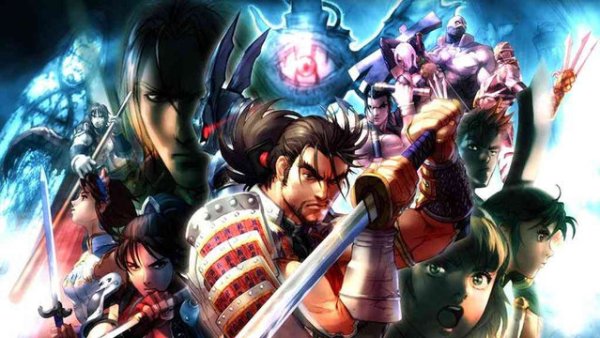
SoulCalibur II remains the definitive SC experience, and it provided a wealth of meaningful improvements over its predecessor while introducing a host of new characters including Raphael, Talim, Yun Seong, and Cassandra.
No wonder it’s the most popular SoulCalibur game still after so many years, right?
Many of the mechanics in modern games from the series were implemented here, like clashes when two attacks hit at the same time, Guard Break attacks, Soul Charge, and the step and avoid systems.
Even by today’s standards SCII holds up incredibly well, and it helped make a great fighting system even better.
Of course, this was also the first entry to include guest characters, and there were some big gets for Namco. Each system had a different guest; Spawn on Xbox, Heihachi on PS2, and Link on GameCube.
Each of these characters had completely unique designs and movesets that matched their characters well. This helped flesh out the roster in a fun way, which already featured a whopping 25 characters.
In a list of the best fighting games of all time, SoulCalibur II would sit very near the top. It’s the quintessential experience of the series, and even more than its predecessor, would define the series’ future.
